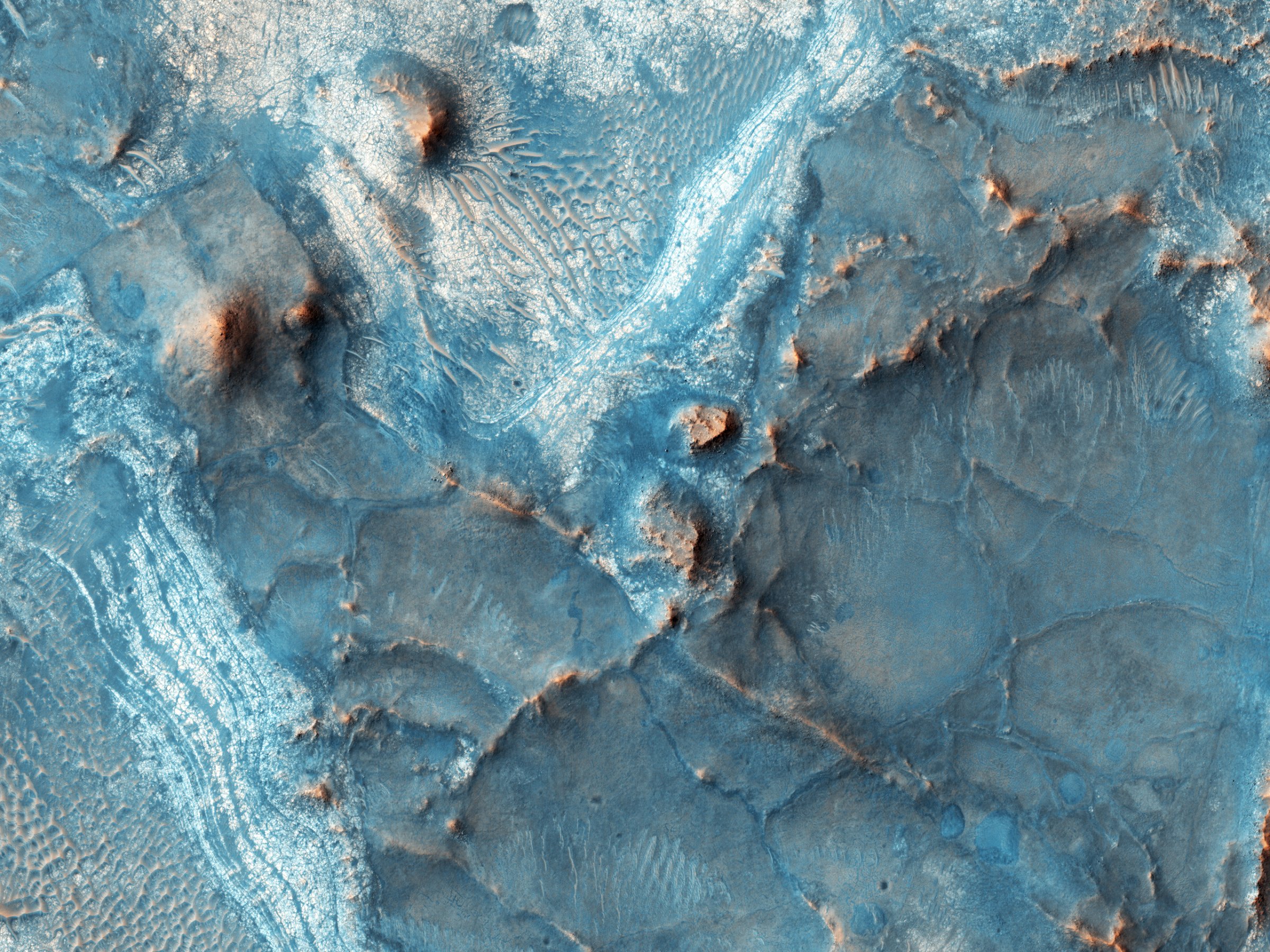
The Mars Reconnaissance Orbiter has recently released this color image of the Nili Fossae region, one of the most colorful regions of Mars.
Many regions of Mars are covered in a homogenous layer of dust or regolith, but here, the combination of exposed bedrock, sand dunes, and diverse rock composition allows the colors to come through brilliantly. The camera operates in visible wavelengths, the same as human eyes, but can also capture near-infrared wavelengths to obtain information on the mineral groups present.
The HiRISE (High Resolution Imaging Science Experiment) camera aboard the spacecraft is capable of returning images of the Martian surface with such a high resolution, that objects as small as one meter in length can be distinguished. Its stereo and color capabilities allow scientists to explore Mars in 3D and with compositional information, making it an important tool in investigating the safety of future landing sites for other missions, such as the Phoenix lander, MSL (Curiosity), or the Mars Science Laboratory.
More Must-Reads from TIME
- Inside Elon Musk’s War on Washington
- Meet the 2025 Women of the Year
- Why Do More Young Adults Have Cancer?
- Colman Domingo Leads With Radical Love
- 11 New Books to Read in Februar
- How to Get Better at Doing Things Alone
- Cecily Strong on Goober the Clown
- Column: The Rise of America’s Broligarchy
Contact us at letters@time.com